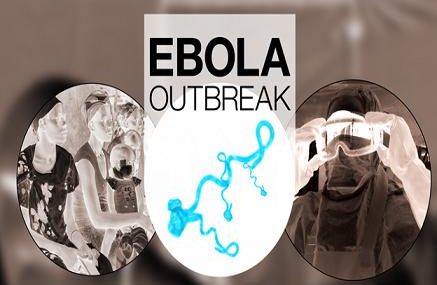Ebola virus disease (EVD) is a severe and often fatal illness caused by infection with the Ebola virus, a member of the Filoviridae family. The virus is transmitted to humans from wild animals and spreads through human-to-human transmission via direct contact with the bodily fluids of infected individuals or surfaces contaminated with these fluids. The incubation period for Ebola virus infection ranges from 2 to 21 days, with an average of 8 to 10 days. Early signs and symptoms include sudden onset of fever, fatigue, muscle pain, headache, and sore throat, progressing to more specific symptoms such as vomiting, diarrhea, rash, and impaired kidney and liver function. Additionally, patients may experience non-specific symptoms like abdominal pain, chest pain, and difficulty breathing.
Suspecting Ebola infection is crucial in individuals with a history of travel to or residence in areas with active Ebola transmission, or those who have had close contact with infected individuals or animals.
Healthcare providers should consider Ebola in patients presenting with fever and symptoms consistent with EVD, especially if they have recently traveled to endemic regions or have had exposure to infected individuals.
Ebola, a highly contagious viral infection, spreads efficiently through various physiological pathways within the body:
- Body Temperature: Elevated temperatures, particularly in the oral cavity and upper digestive tract, create an optimal environment for Ebola virus replication and transmission.
- Immune Status: The strength and efficacy of the body’s immune response are crucial determinants of Ebola susceptibility and disease severity. Individuals with compromised immune function are at increased risk of developing severe Ebola symptoms due to diminished ability to combat the virus effectively.
- Blood pH: Blood pH levels influence viral replication dynamics. Lower pH levels may impede viral proliferation, potentially limiting the spread of Ebola within the body.
- Nutritional Status: Adequate nutrition is essential for maintaining a robust immune system and combating viral infections. Lower levels of essential nutrients, including sugars, may impair the replication and dissemination of Ebola virus.
- Blood Circulation: Impaired blood circulation, as observed in individuals with cardiovascular diseases or microcirculatory dysfunction, can compromise the body’s ability to mount an effective immune response against viral pathogens. This may predispose individuals to increased susceptibility to Ebola infection and delayed viral clearance.
- Respiratory Diseases: Preexisting respiratory conditions, such as emphysema and obstructive pulmonary diseases, can exacerbate the severity of Ebola infection by compromising lung function and respiratory defenses. This may increase susceptibility to respiratory viral infections, including Ebola.
Healthcare providers must consider these physiological factors when assessing the risk of Ebola transmission and implementing preventive measures. Addressing underlying health conditions and optimizing immune function are essential strategies for reducing the severity of Ebola infection and improving clinical outcomes. Early detection, prompt treatment, and strict infection control measures are crucial for containing Ebola outbreaks and preventing further transmission within communities
Diagnosis of Ebola virus infection involves laboratory testing of blood samples using molecular or serological techniques to detect viral RNA or antibodies. Rapid diagnostic tests are available for use in field settings, enabling early identification of cases. Diagnosis should occur promptly after symptom onset to initiate appropriate medical care and infection control measures.
Treatment options for EVD are primarily supportive and include fluid and electrolyte replacement, maintaining oxygenation and blood pressure, and treating complications such as secondary bacterial infections. Experimental treatments such as monoclonal antibodies, antiviral drugs, and convalescent plasma therapy may be considered under controlled conditions. The prognosis for Ebola virus infection varies depending on various factors, including the individual’s overall health, the timing of diagnosis and treatment initiation, and the severity of the disease. Early detection and supportive care can improve outcomes, but EVD carries a high mortality rate, ranging from 25% to 90% in different outbreaks.
Verified by: Dr.Diab (March 25, 2024)
Citation: Dr.Diab. (March 25, 2024). What is Ebola virus disease? Diagnosis and Treatment Options. Medcoi Journal of Medicine, 4(2). urn:medcoi:article18200.












There are no comments yet
Or use one of these social networks